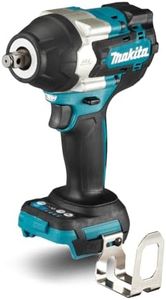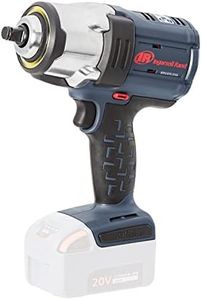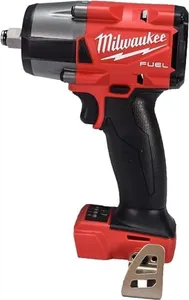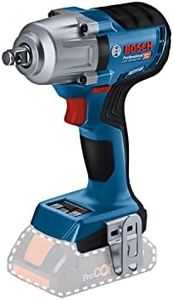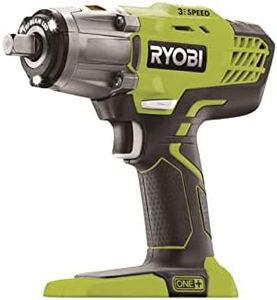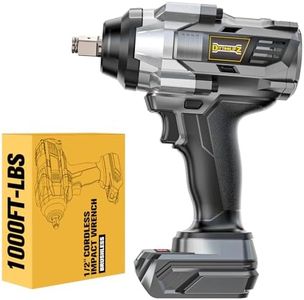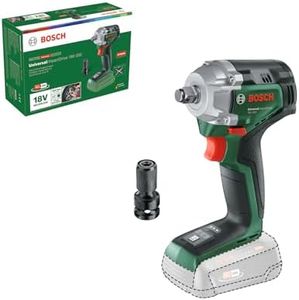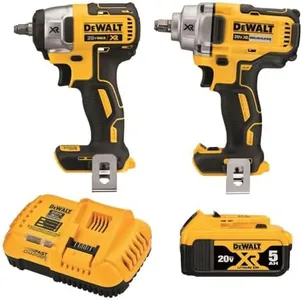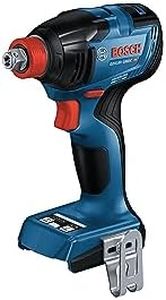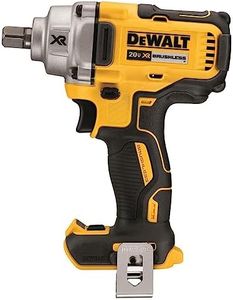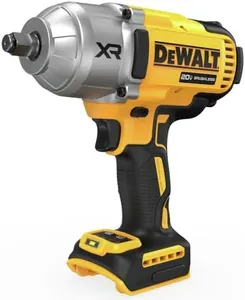We Use CookiesWe use cookies to enhance the security, performance,
functionality and for analytical and promotional activities. By continuing to browse this site you
are agreeing to our privacy policy
10 Best Cordless 1 2 Impact Wrench
From leading brands and best sellers available on the web.Buying Guide for the Best Cordless 1 2 Impact Wrench
Choosing a cordless 1/2" impact wrench can be a fantastic decision if you need a flexible, powerful tool for loosening and tightening nuts and bolts—especially where portability and ease of use matter, such as auto work, construction, or DIY projects. The process of picking the right impact wrench should start by considering your typical tasks, how heavy duty they are, and how often you'll use the tool. Understanding the main specifications will help you match the wrench’s capabilities to your real needs, so you make a satisfying, long-lasting choice.TorqueTorque is a measure of the turning force the impact wrench can deliver, usually indicated in foot-pounds (ft-lb) or Newton-meters (Nm). Higher torque means the wrench can remove tougher, more stubborn fasteners. Wrenches can be divided into light-duty (up to about 200 ft-lb), mid-range (200–400 ft-lb), and heavy-duty (over 400 ft-lb). For basic home use or light automotive work, a lower torque might suffice, while more demanding tasks like truck tire changes or rusted bolts require higher torque. Let your frequent task difficulty guide the level you need.
Battery VoltageBattery voltage, most often 18V or 20V, indicates the power source strength of cordless impact wrenches. Higher voltage typically delivers more power and runtime but might make the tool heavier. Lower voltages, like 12V, offer decent performance for lighter jobs and are easier to handle for long periods. Think about how much power you realistically need and how much weight you’re comfortable handling for the tasks you tackle most.
Battery Capacity (Ah)Amp-hours (Ah) determine how long the battery will last before needing a recharge. Higher numbers mean more working time per charge but also a larger, heavier battery. If you tend to use your tool for short, infrequent tasks, a smaller capacity should be fine. For regular or extended use where charging breaks are inconvenient, a higher capacity is better.
WeightWeight impacts how comfortable the tool is over time. Light impact wrenches (around 3-4 pounds) are easier to maneuver and less tiring, making them suitable for overhead or extended use. Heavier models provide extra power but can cause fatigue more quickly. Think about how often and how long you'll be holding the wrench and select a weight that matches your physical comfort and usage habits.
Drive Type and SizeThe drive size refers to the part where you attach sockets. A 1/2" drive is very common and versatile, handling most automotive and general mechanical work. If your tasks involve larger or specialty fasteners, other sizes exist, but 1/2" is a solid, all-around choice. Always match socket sets to your drive size for a secure and safe fit.
Impact Rate (IPM/BPM)The impact rate, measured in impacts or blows per minute (IPM/BPM), tells you how many times the wrench delivers its hammering action per minute. A higher number usually translates to faster performance, particularly with tough bolts, but not always more force. For heavy, stuck fasteners, a higher impact rate can help speed up the job, but for precision or lighter tasks, a modest rate is sufficient.
Speed (RPM)Rotations per minute (RPM) reflect how quickly the tool’s anvil spins. Higher speeds help you work faster on less stubborn bolts, while lower speeds offer more control, especially for tightening so you don’t overtighten or strip threads. Many wrenches offer variable speed triggers—very handy for adjusting speed according to your needs—so think about whether you value more control or pure speed.
